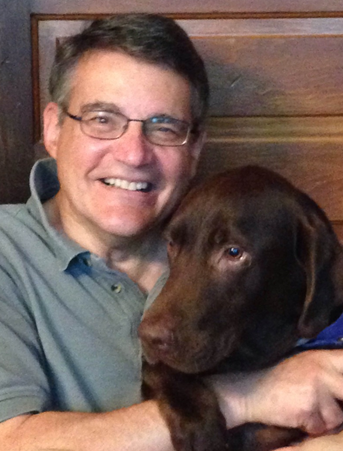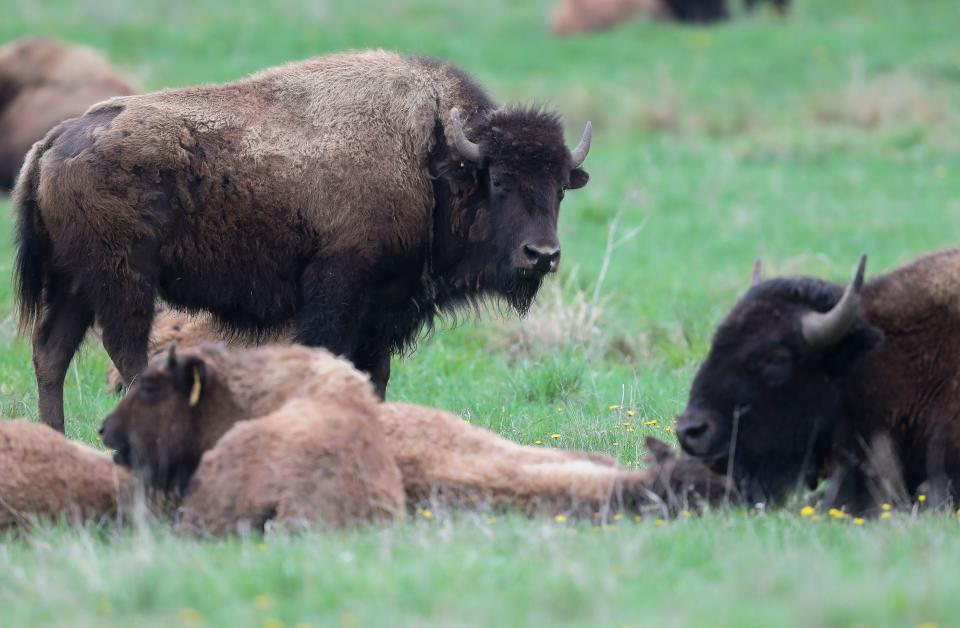Baker: American Bison faced near extinction

“The buffalo gave us everything we needed. Without it we were nothing. Our tipis were made of his skin. His hide was our bed, our blanket, our winter coat. It was our drum, throbbing through the night, alive, holy…
Out of his skin we made our water bags. His flesh strengthened us, became flesh of our flesh. Not the smallest part of it was wasted. His stomach, a red-hot stone dropped into it, became our soup kettle. His horns were our spoons, the bones our knives, our women's awls and needles. Out of his sinews we made our bowstrings and thread. His ribs were fashioned into sleds for our children, his hoofs became rattles. His mighty skull, with the pipe leaning against it, was our sacred altar. The name of the greatest of all Sioux was Tatanka Iyotake — Sitting Bull.
When you killed off the buffalo you also killed the Indian, the real, natural, wild Indian.” —John Fire Lame Deer, Mineconju-Lakota Sioux (1903-1976)
Lame Deer’s “When you killed off the buffalo…” meant me. Or at least my representatives which, since I am a direct beneficiary of Caucasian hide hunters’ clearing of bison — and therefore Native Americans — from the Great Plains in the late 1800s, amounts to the same thing.
Deb and I just returned from spending several weeks in Yellowstone and Glacier National Parks. Such mixed emotions. The teeming wildlife of Yellowstone, the carved peaks of Glacier set against the bleak history of how the U.S. government won the West through whole parades of broken treaties, deceit, and warfare.

Not that the indigenous peoples prior to the European conquest of North America were sweethearts of harmony and peaceful coexistence. The tribes warred for territorial dominance and prestige just like every other human culture.
But winners write the history books, so it’s said, and in this age where American legislatures are self-righteously forcing the removal of Holocaust, Social Justice, and the Black Lives Matter topics from Social Science textbooks to protect white children from politically motivated “woke indoctrination” …
Sigh.
Anyway, there’s a world of difference between a white guy with European ancestry marveling at a 2,000-pound bison blocking the road in Yellowstone’s Hayden Valley and the same bull seen through the eyes of a fellow with deep roots in Shoshone or Crow civilization.
And what of that bull? What about his history?
Millions of bison stretched across North America at one time
At the time of the first colonists, the range of the American Bison (commonly called a buffalo although it is more closely related to yaks than the true buffalos of Asia) stretched from Alaska across the Great Plains, and into much of Eastern U.S. and Northern Mexico. Our best estimates put their numbers at the start of the 19th century between a minimum of 30 million to well over 60 million animals.
And yet by the early 1800s, the buffalo had been eliminated west of the Rockies and east of the Mississippi. At the turn of the 20th century, government records indicated a total population of just 541.
Although it was never the U.S. government’s officially stated policy to pacify the tribes of the Great Plains by slaughtering their principal means of livelihood, that was certainly its operational plan of action. After the Civil War, President Ulysses S. Grant tasked Generals William Sherman and Phillip Sheridan to address the “Indian problem” by forcing Native Americans off the Great Plains and onto reservations.
In October 1868, Sheridan wrote to Sherman that their best hope of defeating the tribes was to “make them poor by the destruction of their stock, and then settle them on the lands allotted to them.” But it wouldn’t prove necessary for U.S. soldiers to do most of the work.
By 1880, 5,000 bison were killed each day in the U.S.
Following Gen. George Armstrong Custer’s defeat in the Battle of Little Bighorn on June 25, 1876, the government only had to allow the commercial exploitation of the still vast herds of buffalo. By 1880, it’s estimated that 5,000 were being killed each day, their hides being turned into industrial machine belts, blankets, and clothing; their bones ground into fertilizer and china.
Ironically, in 1902 the Army was called in to protect the last 20 or so bison of Yellowstone from poachers.
Primarily from these animals and several hundred others that had been rescued by a handful of ranchers, today’s population has increased to around 20,500 wild bison in conservation herds (about 6,000 in Yellowstone) and another 420,000 in commercial herds.
So, the bison is no longer threatened by extinction. In fact, in 2016, President Barack Obama signed the National Bison Legacy Act making the buffalo the country’s national mammal, thereby joining the bald eagle, as the two animals representing the country.
Intriguingly, like the bison, the bald eagle was only recently rescued from near extinction, with just 417 nesting pairs in the lower 48 States in 1963. Today, Ohio alone is home to more than 700 pairs.
Ken Baker is a retired professor of biology and environmental studies. If you have a natural history topic you would like Dr. Baker to consider for an upcoming column, please email your idea to fre-newsdesk@gannett.com.
This article originally appeared on Fremont News-Messenger: Baker: Attitude toward vast planes of buffalo depended on the hunter

